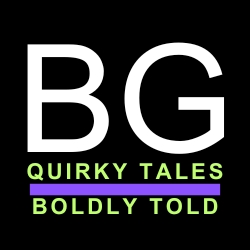The topic of artificial intelligence and its role in creative work has been all over the blogosphere. And rightly so. From deepfakes convincing us celebrities are doing things they aren’t really doing to DeepZen and Findaway Voices generating audiobooks in eerily true voices, artificial intelligence is everywhere in the creative space. Some see A.I. as a simple tool and nothing more. Others look at it as the doom of civilization. One thing is for sure: A.I. has a lot of potential.
Is it a tool or trouble?
Two of the biggest A.I. bots connected to authors are ChartGPT and Midjourney A.I. One can help write your book and one can generate images in the style of known artists. Many people feel tools like these are a way to simplify research, frame a story, or generate samples of art to help focus their true work (or get some cheap promotional materials). These models do offer that opportunity, and if users stick to that help-me-with-the-prototype approach, then A.I. can be benevolent and not overtly damage the work and livelihood of writers, artists, and other creatives. But we’re talking people, here.
For those who don’t know, both ChatGPT and Midjourney A.I. are bots (programs) that take simple text input from the user (you type in phrases, questions, descriptions, etc.) and generate a response. Both learn the more you use them so that they can more accurately give you what you want (or think you want).
People who back the development and expansion of A.I. argue that it is making our lives easier. The argument is also made that A.I. lacks bias, as the responses it creates are driven purely by inputs and data. There in lies the rub. A.I. is used by people, so the “no bias” argument goes out the window. The input has human bias thus the output does, too. A third argument is that if we don’t make it, someone else will, so why not? There’s truth to this and it scares me.
A machine, bot, model, program, etc. eliminating an existing human occupation is harm generated and opportunity lost.
Adopters of artificial intelligence reveal an apparent ignorance of or indifference to the real human harm using such models causes. Midjourney (which was only released in 2022) has driven down the rates charged by graphic designers, illustrators, and cover artists. What publisher is going to pay top dollar to get a real human artist when they can have something good enough to sell copy generated for next to nothing? And by now most every working author knows about the fiasco that befell Jane Friedman over this past year. The short version is that someone used A.I. to create and sell books under her name. The full story is here, and is worth the read as a cautionary tale if for no other reason.
Every reputable literary agency and publisher–no matter the format–refuse to accept A.I. generated work for representation or publication. But they receive hundreds of submissions each month. Do they really have the time and staffing to verify this? More likely they learn about it after the fact and then have to retract contracts or payments and send in the legal team. That’s more money spent that could be used to put more real books and art out in the world. It is a giant elephant the industry and the world doesn’t know how to handle.
This is what’s happening now. Both ChatGPT and Midjourney aren’t even two years old and both have already been upgraded. More bots and models are on their way. The only thing I know to do to combat the spread and accepted use of these tools, is to advocate against them. Do the work yourself or hire a human to do it for you. If you want to reach out to the developers (OpenAI and Midjourney, Inc. in these cases), that’s up to you. I’m no activist. But I am a human, and I’m not ready to give over my creativity to the machines just yet.
